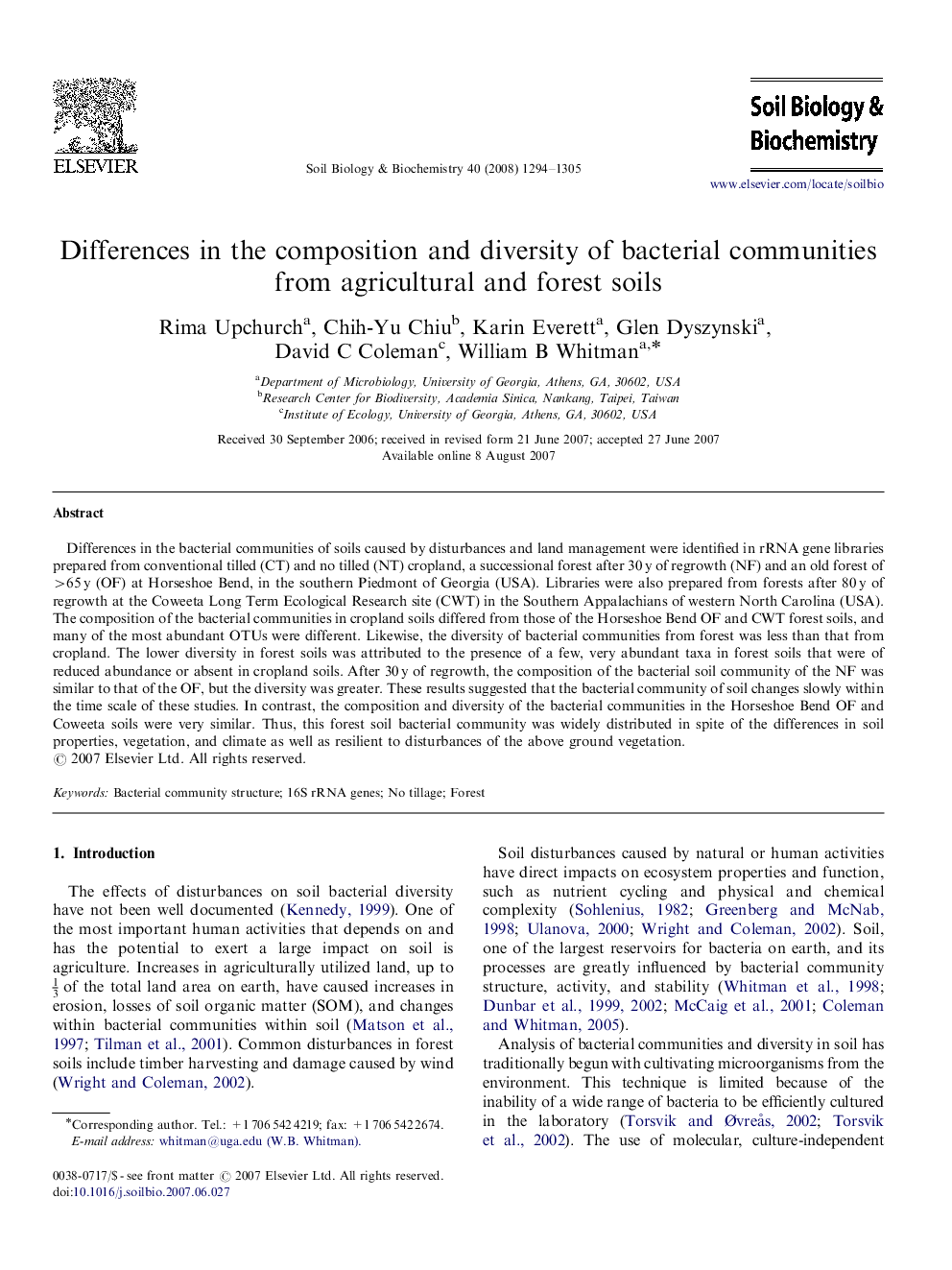| Article ID | Journal | Published Year | Pages | File Type |
|---|---|---|---|---|
| 2026937 | Soil Biology and Biochemistry | 2008 | 12 Pages |
Differences in the bacterial communities of soils caused by disturbances and land management were identified in rRNA gene libraries prepared from conventional tilled (CT) and no tilled (NT) cropland, a successional forest after 30 y of regrowth (NF) and an old forest of >65 y (OF) at Horseshoe Bend, in the southern Piedmont of Georgia (USA). Libraries were also prepared from forests after 80 y of regrowth at the Coweeta Long Term Ecological Research site (CWT) in the Southern Appalachians of western North Carolina (USA). The composition of the bacterial communities in cropland soils differed from those of the Horseshoe Bend OF and CWT forest soils, and many of the most abundant OTUs were different. Likewise, the diversity of bacterial communities from forest was less than that from cropland. The lower diversity in forest soils was attributed to the presence of a few, very abundant taxa in forest soils that were of reduced abundance or absent in cropland soils. After 30 y of regrowth, the composition of the bacterial soil community of the NF was similar to that of the OF, but the diversity was greater. These results suggested that the bacterial community of soil changes slowly within the time scale of these studies. In contrast, the composition and diversity of the bacterial communities in the Horseshoe Bend OF and Coweeta soils were very similar. Thus, this forest soil bacterial community was widely distributed in spite of the differences in soil properties, vegetation, and climate as well as resilient to disturbances of the above ground vegetation.
